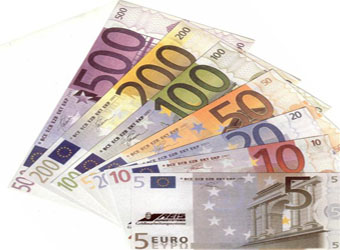The euro snapped a two-day advance against the dollar amid speculation the European Central Bank may need to restart its government bond purchase program as the region’s sovereign debt crisis intensifies.
Australia’s dollar dropped from a one-week high after a report showed China’s economy expanded less than analysts forecast, denting the outlook for global growth. The greenback was headed for a weekly loss versus most major peers before U.S. data that economists said will show inflation slowed.
“Markets are wary about the euro,” said Simon Smith, chief economist at foreign-exchange broker FXPro Group Ltd. in London. “There’s a sense that the old problems are returning to the euro-region. The ECB buying bonds is a way of pulling markets back from severe stress, but the risk is that the market sees it as more negative than positive.”
According to Bloomberg, the euro declined 0.1 percent to $1.3173 at 8:35 a.m. London time, trimming its weekly advance to 0.6 percent. It was little changed at 106.62 yen, heading for a 0.2 percent drop over the week. The yen traded at 80.94 per dollar. It has appreciated 0.9 percent this week.
Spanish government bonds headed for a second-straight weekly decline, a sign the respite in the euro-region’s debt crisis created by the ECB’s unlimited three-year loans program may be coming to an end. German bunds, Europe’s benchmark government securities, rose for the first time in three days.
Seventeen of 22 economists surveyed this week by Bloomberg predicted the ECB will be forced to resume its so-called Securities Markets Program to contain bond yields, while only one forecast it will offer another round of the unlimited three- year loans. Nine said the central bank may consider shorter- maturity loans of one or two years.
Australia’s dollar, known as the Aussie, slid against all of its 16 major counterparts after China said gross domestic product grew 8.1 percent year-on-year in the first quarter, the slowest expansion in almost three years.
“The market’s skew was definitely looking for a stronger number,” Jonathan Cavenagh, a Singapore-based currency strategist at Westpac Banking Corp. (WBC), Australia’s second-biggest lender, said of China’s GDP figure. “The knee-jerk reaction has been to sell risk currencies,” including the Aussie dollar.
The Australian dollar fell 0.5 percent to $1.0385 after earlier reaching $1.0453, the highest level since April 3. China is Australia’s largest trading partner.
The Aussie has advanced 0.4 percent this week, the third biggest gain among the 10 currencies tracked by Bloomberg Correlation-Weighted Indexes. The dollar has declined 0.5 percent and the euro has advanced 0.2 percent.
